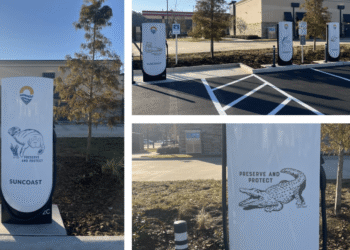General Motors Faces $1.6 Billion Financial Hit Amid EV Strategy Adjustments
The automaker is realigning its EV production to match cooling demand and shrinking incentives, resulting in a significant financial blow.
Key Points:
- GM is adjusting its EV capacity, incurring a $1.2 billion charge.
- Despite a 105% surge in EV sales through the first three quarters, the company is scaling back its electric vehicle strategy.
- The changes will not affect the current EV lineup of Chevrolet, GMC, and Cadillac.
General Motors is set to incur a financial hit of up to $1.6 billion in the next quarter due to the removal of the federal electric vehicle tax credit at the end of September. This follows Ford’s recent announcement of writing down up to $400 million in manufacturing assets and reducing $1.5 billion in EV-related spending.
In its third-quarter report, GM confirmed that its board of directors had approved $1.6 billion in charges related to the “strategic realignment of our EV capacity and manufacturing footprint to consumer demand.” The company specified that $1.2 billion of that amount relates to adjustments in its EV capacity, while the remaining $400 million stems from “primarily contract cancellation fees and commercial settlements associated with EV-related investments, which will have a cash impact.”
GM emphasized that the measures it’s taking will not affect its existing range of electric models sold under the Chevrolet, GMC, and Cadillac brands. However, the company cautioned that it expects “the adoption rate of EVs to slow” due to “the termination of certain consumer tax incentives for EV purchases and the reduction in the stringency of emissions regulations.”
Despite this, GM’s sales of electric vehicles rose 107% in the July-September period and have increased 105% year-to-date. The company sold a total of 66,501 EVs in Q3, with Chevrolet cementing its position as the second-largest EV brand in the country. The Equinox EV was the best-selling non-Tesla-branded electric vehicle.
As the electric vehicle market continues to evolve, GM is adapting its strategy to meet changing consumer demand and regulatory requirements. While the company’s EV sales have surged, it is taking steps to ensure a sustainable and profitable future.
The image shows a GM Supercharger Adaptor, highlighting the company’s efforts to expand its electric vehicle charging infrastructure.
Overall, GM’s adjustments to its EV strategy reflect the complexities and challenges of the rapidly changing automotive landscape. As the industry continues to shift towards electrification, companies like GM must be prepared to adapt and evolve to remain competitive.






![Lucid Motors launches Gravity Touring SUV, starting below $80,000 [Video]](https://thecruisectrlr.com/wp-content/uploads/2025/11/Lucid-Gravity-Touring-Hero-350x250.jpg)




